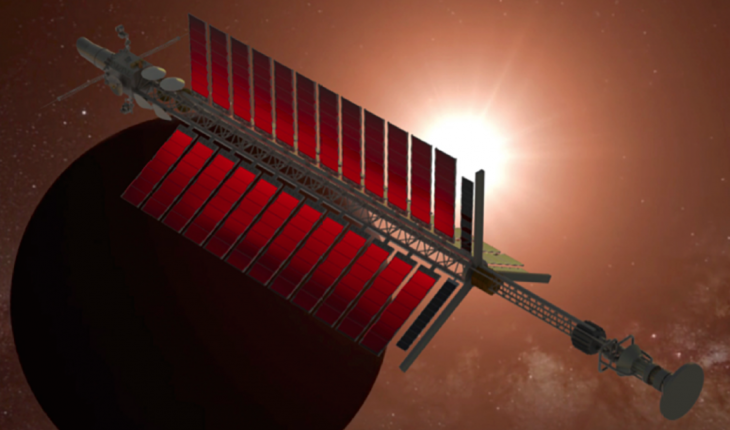NASA-funded scientist says ‘MEGA drive’ could enable interstellar travel
The drive would provide enough thrust for a spacecraft to travel near the speed of light using only electricity, says physicist Jim Woodward.
There are several barriers keeping people from leaving our solar system, including financial and health issues. Our spacecraft are just too sluggish and too dependent on fuel to realistically undertake a trip to Alpha Centauri, the star that is nearest to our Sun. However, propulsion is the fundamental challenge.
What then do we require? Like a reactionless drive, which is an engine that propels a spaceship without using all of its available fuel. Such a thing only appears in science fiction thus far. But physicist Jim Woodward has been working to fix that for the past few decades.
The 79-year-old physics professor has created a thruster design that he thinks will demonstrate the feasibility of interstellar travel for humans in the future. The machine, known as the Mach-effect gravitational assist (MEGA) drive, just needs an electrical supply to generate thrust.
Mixed outcomes have emerged from early experiments. While other teams that attempted to replicate Woodward’s studies reported little to no propulsion, he was only able to demonstrate very small quantities of thrust. However, NASA was fascinated enough by the concept to give Woodward $625,000 over the course of 2017 and 2018.

Illustration of SSI Lambda
Additionally, after redesigning the thruster’s mount in 2019, Woodward and his associate and fellow physicist Hal Fearn announced a significant achievement. This change generated “more than 100 micronewtons, orders of magnitude larger than anything Woodward had ever built before,” according to a recent feature in Wired.
(About be clear, the push we’re referring to is hardly sufficient to clearly move an object across a table. However, if the outcomes are verified, it would imply that the technique may be scaled up.)
Woodward’s approach is based on theories concerning inertia, or an object’s propensity to remain at rest unless moved, put forth by physicist Ernst Mach in the 19th century.
Simply put, the Mach’s principle proposes that local inertial effects are caused by distant matter. So, the inertia you experience when pushing a shopping cart is somewhat influenced by a star in a distant galaxy. At least, that’s the concept. (In this blog post, Woodward provides a thorough analysis of his thoughts on Mach’s premise.)
The general relativity theory that Albert Einstein developed in the 20th century, which essentially asserts that gravity and inertia are fundamentally related, incorporates Mach’s concepts. However, this theory of inertia was eventually disproved by the larger physics community, partly due to a 1961 publication that demonstrated that inertia had nothing to do with the gravitational pull of far-off objects.
Nevertheless, Woodward maintains that Einstein was correct all along and that it is now feasible to create propulsion systems that rely solely on an electrical charge and not gasoline. A stack of piezoelectric crystals, which creates an alternating electric field when power is given to it, is the primary component of his thruster, as stated by Woodward:
“Because piezoelectric crystals are electromechanical devices, they mechanically expand and contract based on the sign of the applied voltage. Therefore, no matter what the stack does mechanically, applying a voltage causes an E/c2 energy fluctuation in the stack, and you’re also producing an acceleration because the stack’s changing dimensions are caused by electromechanical effects, which also causes the acceleration needed to couple the device to the strong gravitational field.
The secret is in accurately timing the energy variations and mechanical oscillations, which necessitates employing two frequencies: the first and second harmonics, with the second harmonic producing thrust”
Even now, Woodward and his team are developing designs for a spaceship that might make use of the MEGA drive. The craft, known as the SSI Lambda, would use piezoelectric crystals and a tiny nuclear reactor to generate power.
“The researchers described the SSI Lambda probe’s use of MEGA drive thrusters as a “truly propellantless-propulsion spacecraft” in their report to NASA. With merely the use of electric power, it is capable of traveling at speeds up to the speed of light in a vacuum. There hasn’t been another approach proposed yet that has solid physics to support it for reaching the stars and braking into the destination system”
Other researchers and engineers want to test Woodward’s inventions once the COVID-19 outbreak has subsided. The outcomes of those tests ought to show if he’s on to anything. The chances are modest, according to several industry analysts. However, that does not imply that it is not worth looking into.
“Mike McDonald, an aeronautical engineer at the Naval Research Laboratory in Maryland, told Wired that the likelihood that it is true is “between a 1-in-10 and a 1-in-10,000,000 possibility,” with the likelihood leaning more toward the higher end of that range. But it would be fantastic if there was only one opportunity. We engage in high-risk, high-reward job for this reason.”
Do not forget to share your opinion with us to provide you with the best posts !



0 Comments